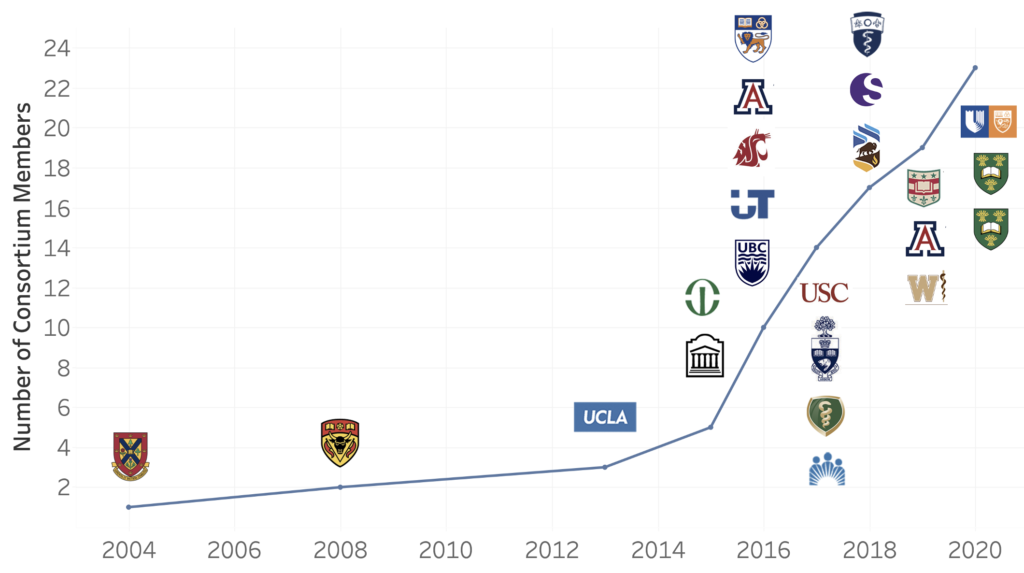Building Together: Part One
Last year, my friend and colleague Zhen Gu and I gave a well-received presentation at the AAMC IT in Academic Medicine conference in Washington, DC, called “Building Together: Lessons Learned Building a Consortium.” Creating this talk was fun but challenging, as it forced me to distill a tremendous amount of experience gained over fifteen years building an international open-source (turned community-source) software consortium. After presenting our talk again in the fall at the Elentra Engage conference in Pasadena, California, I felt that our important work would translate beautifully into an article for my website.
In this two-part series, I will share some incredible lessons learned while building our consortium alongside 20+ universities. I will provide my unique perspective on the most significant opportunities and challenges of working together, the importance and power of building community, the balance of governance, and the ingredients we believe are necessary to collaborate successfully.
Origins of Collaboration
In 2008, after four years of developing the software that would eventually become Elentra, the University of Calgary was looking to replace a piece of curriculum delivery software they had partnered with a commercial vendor to create. It was expensive to operate, and they found that they paid a significant amount of money to the vendor whenever they needed to make changes to meet their evolving needs. It was unsustainable.
After carefully considering their options, some truly progressive leaders at the University of Calgary asked Queen’s University if they could join in on the development effort of the application and share our source code. This collaboration was the impetus of what became the Elentra Consortium.
In 2011, the UCLA David Geffen School of Medicine formed an internal committee tasked with replacing their teaching and learning systems after their vendor discontinued the product they were using, attempting to force a migration to another major commercial learning management system. The committee reviewed eight alternative platforms, which included homegrown tools, open-source platforms, and commercial vendor products. After a year and a half of extensive research, product demos, analyses, and pilots, they chose Elentra. In early 2013, UCLA signed a “Memorandum of Understanding” with Queen’s University, and the Elentra Consortium sprang to life.
Collaboration Mechanics
Instead of simply sharing the source code, the consortium model we created was the vehicle that enabled the collaboration between our institutions. As software developers, we built and maintained the upstream product together first, then pulled that product down to our institution for customization and branding purposes.
At first, our collaboration model was incredibly simplistic. We would meet bi-weekly using the readily available Polycom video conferencing technology at our institutions and discuss the latest needs and how we were addressing them.
The overarching software product at the time was managed by a shared Subversion (later Git) repository and our features and fixes were documented in Redmine (later GitHub, then Jira).
Even in the earliest days, there were relatively few technical barriers to collaboration.
Ingredients for Successful Collaboration
So why did our collaboration work so well? What were the magical ingredients that made our teams click, translating into a successful product and substantial growth in the market?
1. A shared vision and goal
To develop and maintain a robust teaching and learning platform that meets the ever-evolving business needs of our institutions.
2. A culture of collaboration and sharing
A willingness to work together and share not only source code but also our requirements, ideas, documentation, and processes.
3. Buy-in from leadership
An institutional commitment to dedicate the people, the time, and, of course, the money to support the initiative, with the expectation of a high return on investment.
4. Open communication
Despite the geographical distance between our institutions, working together was rarely a barrier. We were “working remotely” long before remote work was the norm. We had open communication through Skype (later Slack) chats, email mailing lists, bi-weekly meetings through video conferencing (later Fuze, then Zoom web conferencing), and even an annual face-to-face meeting, which later became the international Elentra Engage conference.
5. Technical aptitude
We are an intelligent and ambitious team of software developers working to solve interesting and complex problems in the niche medical education market. We had the technical know-how to collaborate effectively, manage and maintain software and servers, and address issues as they arose.
Missing Ingredient: Experience with Growth
The missing ingredient was experience in knowing how to scale, but time would provide us with that experience. Over the next eight years, we would continue to onboard an additional 20 universities in Canada, the United States, and Singapore to the Elentra Consortium.

I hope you enjoyed part one of my two-part “Building Together” series. In my next post, Lessons Learned Building a Consortium, I will share the seven key lessons we took away from building and operating the Elentra Consortium. See you there.